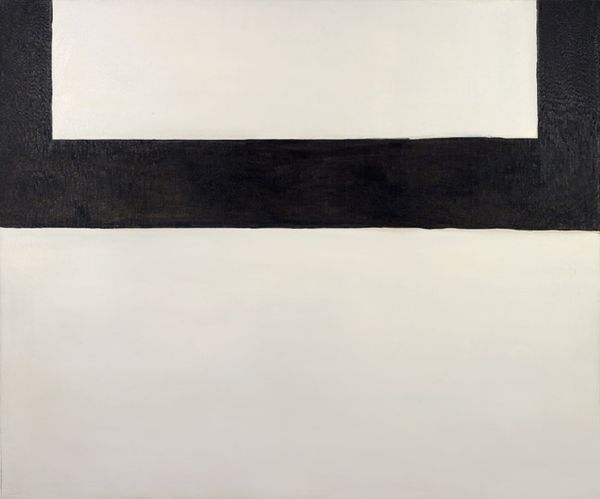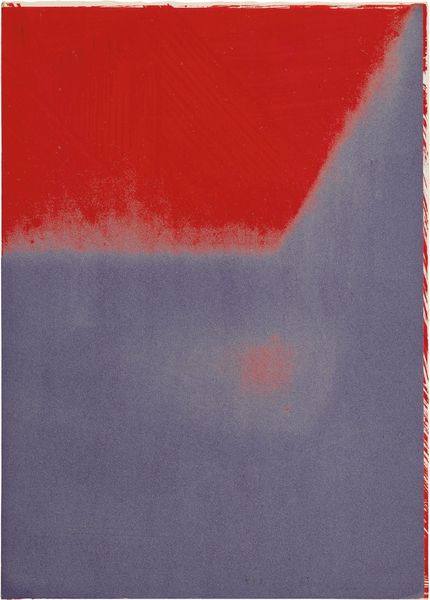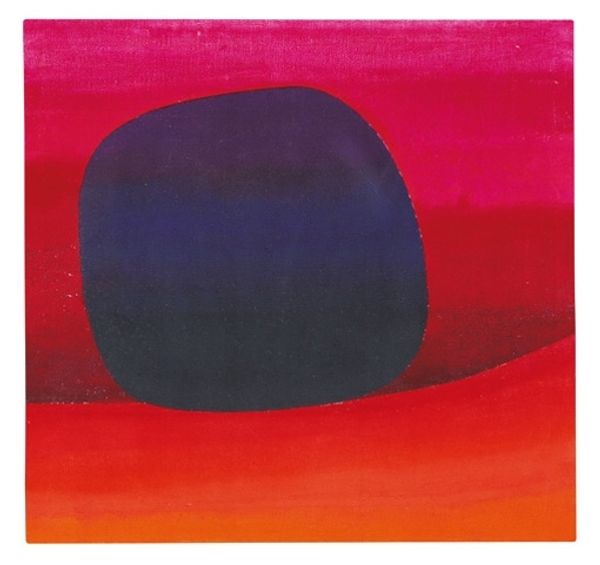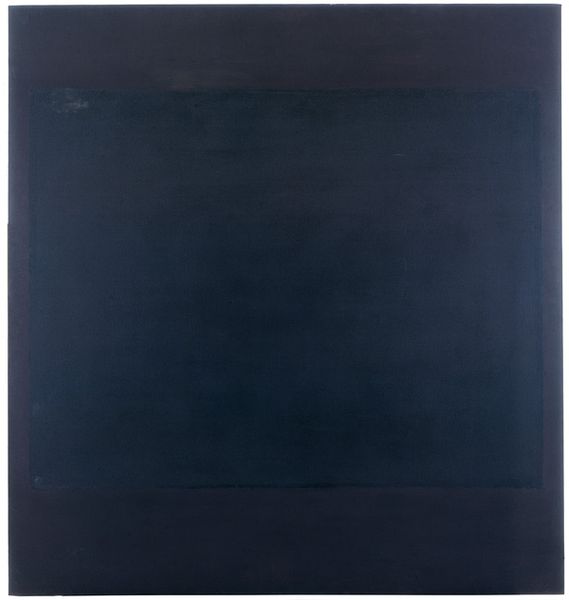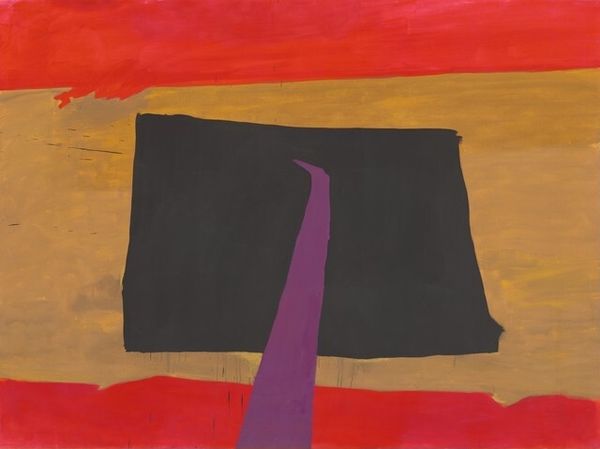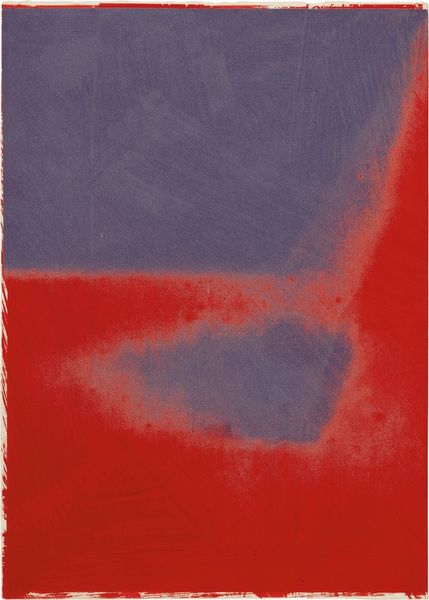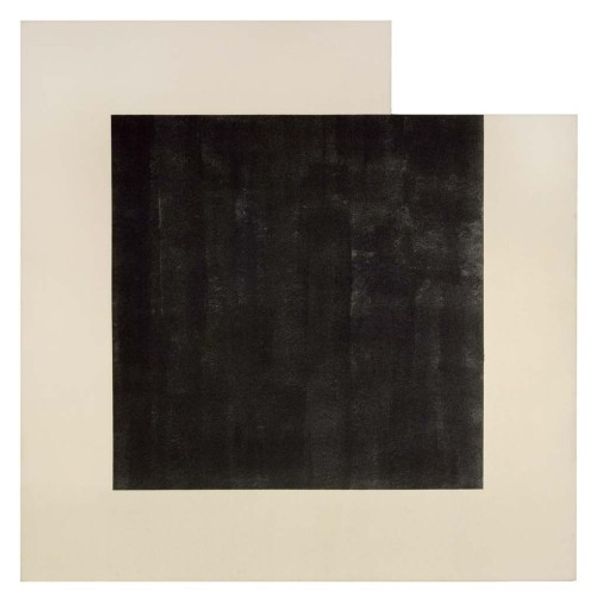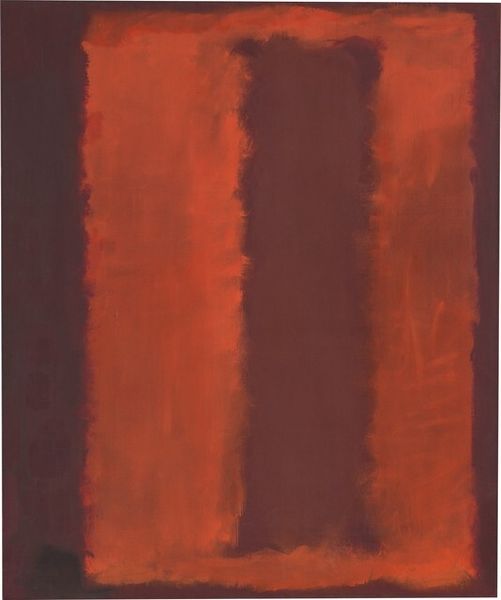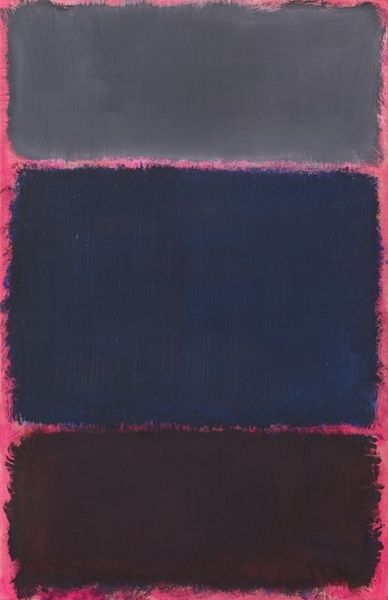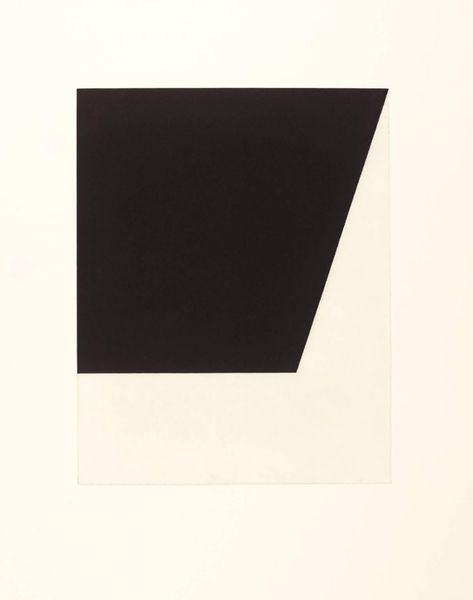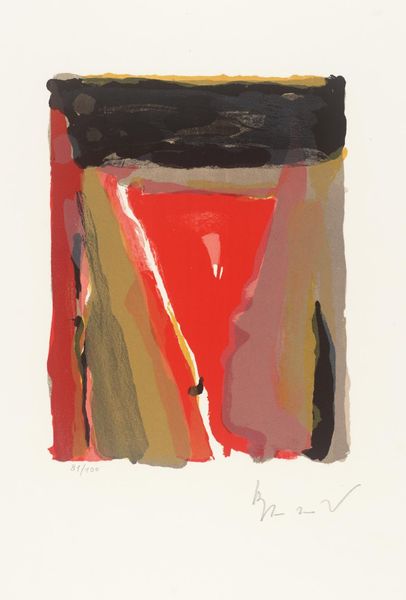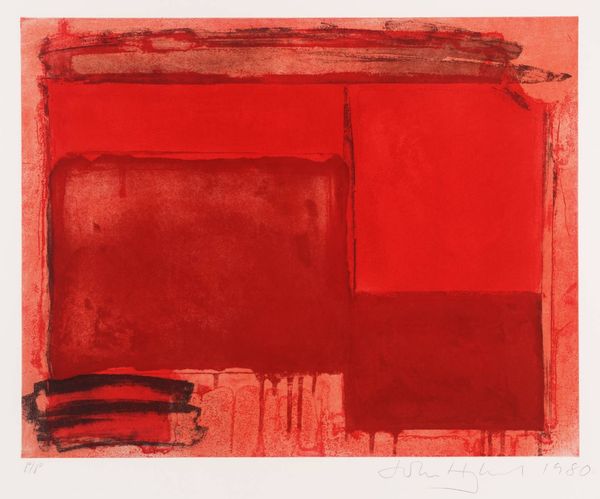
painting, acrylic-paint
#
abstract-expressionism
#
abstract expressionism
#
painting
#
colour-field-painting
#
acrylic-paint
#
geometric
#
abstraction
#
modernism
#
monochrome
Copyright: Rupprecht Geiger,Fair Use
Editor: Here we have Rupprecht Geiger’s "OE 250 (Schwarz vor zweimal Rot)", painted in 1957 using acrylic. I'm immediately struck by the stark contrast and the almost unsettling imbalance in the composition. What are your initial thoughts? Curator: Considering its time, this work exemplifies a societal shift in Germany towards abstraction as a visual language. There's a rejection of representational art forms heavily exploited by oppressive regimes. How do you perceive its relationship with public space? Editor: It feels… deliberately inaccessible. As if its rejecting easy consumption, like it doesn't want to be "used". Is that connected to the post-war sentiment you are mentioning? Curator: Exactly! It confronts viewers, prompting them to grapple with subjective experience, rather than dictating a singular narrative. Notice how the museum context reframes its potential, offering a space for reflection detached from explicit ideological messaging. Where do you think the title figures in? Editor: Well, "Schwarz vor zweimal Rot" clearly identifies the colours present. But, being a somewhat arbitrary combination of letters and numbers also enhances the abstract qualities, further steering it from any political connection. So it's kind of...a rejection by any possible interpretation? Curator: Precisely! This detachment reflects a conscious effort to disassociate from propagandistic uses of art. The institutional framing further elevates this gesture, safeguarding art as a realm of subjective contemplation within the public sphere. Editor: It's fascinating to think about the power this seemingly simple painting holds, as a historical and political statement! I never would have looked beyond the colors. Curator: And I never gave enough consideration to the power of its subjective abstraction. Art reveals so much through historical framing and contemporary viewpoints.
Comments
No comments
Be the first to comment and join the conversation on the ultimate creative platform.
